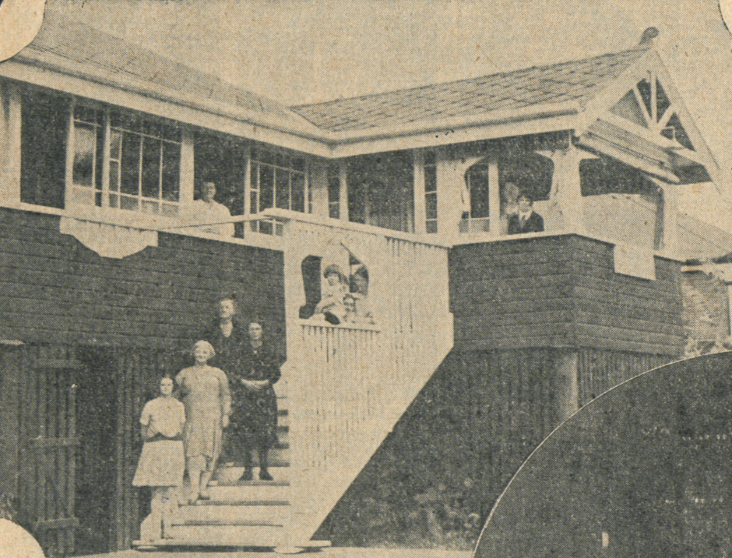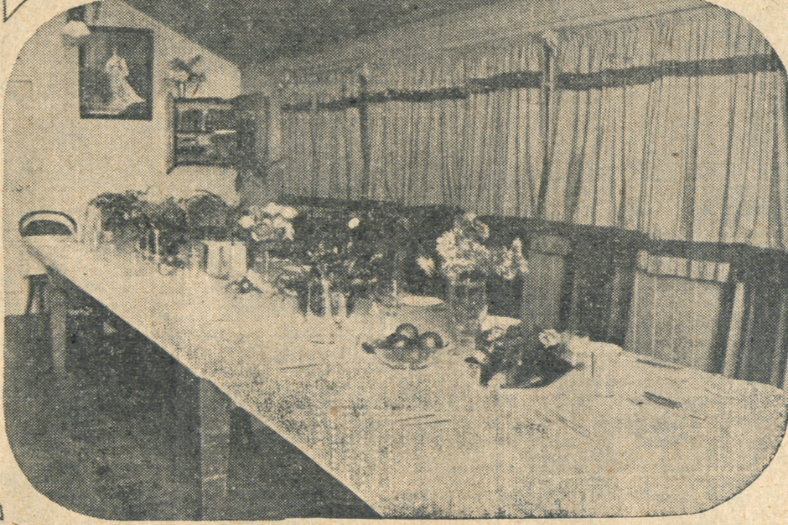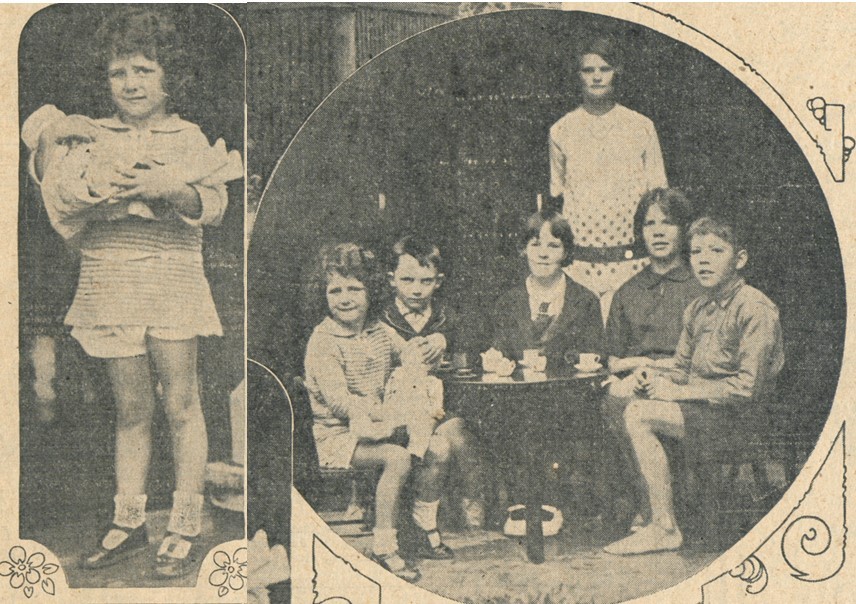Linga Longa: a special seaside home
By Stephanie Ryan, Research Librarian, Library and Client Services | 10 November 2021

Truth 18 May 1930 p23
Origins of Linga Longa as a C.W.A. holiday home
After the end of World War One in 1918, men returned to farm soldier settlements, often unwell and frequently on small non-viable blocks of land. Many, with their families, were isolated in rural and remote areas, without motorised transport or electronic communications. In this context the Country Women’s Association was formed and grew with clearly articulated aims to improve the lives of women and children, especially those in rural and remote areas. They wanted:
- to remove unnecessary hardships and drawbacks
- to ensure adequate medical services to relieve sickness and to reduce the dread associated with homes built in faraway places
- to ensure bush children were not disadvantaged by being denied the highest privileges of education
- to provide a seaside holiday change (Queenslander 10 May 1928 p50)
These were basic conditions accessible to city people, which were much less accessible to those in the country, especially to those who were poorer. Their case was inarguable, and they received support not only from country and suburban women across Australia but also from all levels of government and other welfare groups.
In 1925, the executive of the Queensland C.W.A. saw an opportunity to acquire a seaside home on the lower esplanade (now Flinders Parade) at Sandgate. The sea front was irresistible. Ernie Ruddle, a well-known Brisbane publican, was selling his whimsically named Linga Longa and its size and position were excellent. The large house had direct access to the sea and was near the Sandgate train line to Brisbane. Many C.W.A. branches raised money to outfit the place, which initially had seemed prohibitively expensive for the Metropolitan branch.

The dining room at Linga Longa, Truth 18 May 1930 p23.
Features of the home
The best features of the house were described: three bedrooms all painted white “with set in wardrobes and washbasins,” “the spacious dining-room with its shaded casement windows” and “a model kitchen which, with its black and white floor covering, enamelled gas stove, and gleaming aluminium saucepans [which] will prove a joy to the beholders who have spent so much time with improvised kitchen utensils. The house has been purchased with all furnishings which includes seven beds and bedding, attractive pictures, floor coverings, rugs, curtains, and a good supply of crockery and glassware.” (Brisbane Courier 10 November 1925 p22).
By today’s standards, the exciting features of built-in furniture and a kitchen and dining-room basically fitted out, are not quite so thrilling, but for many visitors it would have meant unaccustomed luxury. The house had additions over time. Four extra rooms paid for by the Taroom, Sandgate and Metropolitan branches were one of many examples of C.W.A. branches working effectively together. Under the house, extra bedrooms and a children’s playroom were built. The verandas were enclosed.

Truth 18 May 1930 p23
The experience of Linga Longa
Everything was done to ensure life was comfortable, refreshing and helpful at Linga Longa. The C.W.A met and greeted visitors. New experiences were important. There was a special emphasis on the children. There were trips to ships in port, particularly interesting for those who had never seen the sea or a seagoing vessel. Outings in motor cars were among the special treats. During August, the Ekka was on the agenda. At Christmas, there was a visit from Santa Claus and gifts for everyone. Days at the Museum and Art Gallery provided more new opportunities missing in rural life at the time. A stay at Linga Longa also allowed the visitors to see family and friends in hospital as well as to take themselves and children to have their health attended to. Hundreds visited Linga Longa every year for a holiday, many paid for by the C.W.A.
The importance of fundraising events was highlighted not only by the special aspects of the occasion but also by the visit of dignitaries such as the Mayor, his wife, the Premier or his wife and other people prominent in the community.
The end of Linga Longa’s role
As the 1960s drew to an end, rural life was changing. Fewer people lived on the land as mechanised equipment reduced the labour required. Not only did more people live in the city but also it was easier to travel to a wider variety of accommodation across the State with the increasing popularity of cars. Motels replaced the boarding house. Linga Longa was given to the Endeavour Foundation and by the end of the 1980s had become a private home which now blends in with the other homes on Flinders Parade.
The Country Women’s Association
The Country Women’s Association, founded in 1922, is celebrating one hundred years next year. Each branch in Australia is writing its history as part of this event. The Association has been an extraordinary force in Australian life and was inducted into State Library’s Business Hall of Fame in 2013 “for its exceptional contribution to the social and economic wellbeing of country women and rural communities” over this time.
State Library holds many resources on the C.W.A including its minutes and records, photographs, journals, cookery, craft and poetry books as well as histories and articles. It worked as a welded, focused force parliamentarians have found hard to resist. Linga Longa was just one expression of the ways they provided assistance to rural Australians, an opportunity for a holiday many would otherwise not have.
Do you have any stories of Linga Longa or the C.W.A.? We encourage you to share them in the comments below.
Find out more...
- Check the State Library catalogue One Search for Queensland Country Women’s Association and find out about the variety of material held for the branches across the State.
- Become a member and login to One Search to discover some interesting insights into this Association in articles.
- Read the State Library blog, Happy birthday! 90 years of Queensland CWA.
- Read about the Queensland Country Women’s Association entry into the Queensland Business Leaders Hall of Fame.
- Ask us if you have further questions.
Comments
Your email address will not be published.
We welcome relevant, respectful comments.